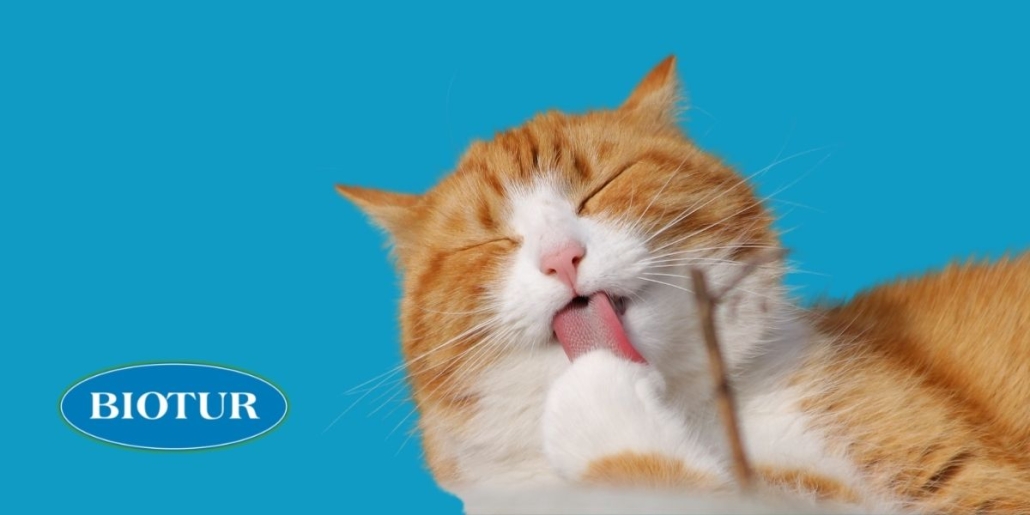Alopecia in cats – Causes. Symptoms. Treatment
Alopecia in cats is a condition that affects cats and is characterized by the appearance of fur-free surfaces on the animal’s skin, especially on the belly, limbs, and back. Hair loss in cats is not a cause for concern for pet owners. Most cats hatch once or twice a year, depending on the cat’s breed. If you notice hairless parts on your pet’s skin, it may be a more severe condition. Is your feline friend a little less furry these days? A particular hair loss, such as hair loss in winter, is expected. But if it overheats, there could be a problem.
Contact your veterinarian to determine the cause of the fall of the fur and the reason for the bald surfaces on the cat’s skin.
Alopecia in cats – Causes
The causes of alopecia in cats vary depending on several factors. You will need to consult your veterinarian to find out precisely what is happening. In most cases, alopecia could be caused by:
You’ll need to consult with your veterinarian to figure out what’s going on. Most of the time, the cause isn’t serious.
It could be:
Allergies – are the most common cause of hair loss. Your cat, like people, may be sensitive to certain foods, bug stings, medications, dust, or pollen. They’ll lick their fur till it’s bald to relieve the itching. It’s easy to cure, but they may need to take medicine for the rest of their lives.
Fleas, mites, lice, and ticks can also cause them to scratch and lick, resulting in bald areas and blisters. In most cases, treatment is rapid and painless. Inquire with your veterinarian about which medication you should take.
It’s not a worm, but it’s ringworm infection. A fungus causes it. A scaly ring of lost hair is also a warning indicator. Your veterinarian can determine whether you have a fungal infection and provide antifungal lotions or ointments, medicated baths, or even oral medications.
When cats are anxious and lick and scratch constantly, they might lose their hair. This is referred to as “psychogenic alopecia” by veterinarians. It causes cats to pick at their stomachs, sides, and legs. It’s more frequent in female purebreds that have an anxious temperament. Treat their wounds and consult your veterinarian about whether they require an antidepressant or a change in their surroundings, such as adding high perches or removing dogs.
Cats with arthritis may lick the painful area on their bodies.
Rare causes for alopecia in cats
Pure breeds, such as Himalayans and Bengals, are more likely to contain hair-loss-causing genes. The Sphynx, for example, is bred to be hairless. Hair loss can indicate an immune system issue, diabetes, an overactive thyroid, or cancer, though it’s rare. Tell your vet everything about your cat’s nutrition, behavior, and environment.
Hair loss in cats can be congenital (existing from birth) or acquired. Hereditary hair loss can be inherited or not. The absence of hair follicle growth is the reason. It can be seen right after delivery or at the time of birth. Alternatively, the cat may be born with normal fur and later have localized or widespread hair loss as a young adult.
The cat is born with normal hair in acquired cat alopecia. Hair loss can be caused by any condition that affects the hair follicles. The condition has the potential to kill the follicle or hair, as well as obstruct hair development. The state might give the cat discomfort (pain or itching), leading to auto trauma and hair loss. Acquired hair loss can be inflammatory or non-inflammatory (as seen in hormonal disorders). Inflammatory disorders are the most common cause of alopecia.
Symptoms of alopecia in cats
Depending on the illness, the signs of alopecia in cats might be prominent or subtle. Hair loss caused by congenital or genetic causes is typically symmetrical (appearing the same on both sides of the body) or restricted to a specific area. In most cases, it isn’t accompanied by any inflammation. The indicators of hair loss are many and are frequently modified by the underlying reason (s). Excessive vomiting, inflammation, skin discoloration, peeling, thickness or reddening of the skin, and itching are frequent symptoms. Secondary skin illnesses, such as infection or fluid leakage, can arise due to several causes. The severity of the itching varies depending on the underlying reason. Unless there is a subsequent skin infection, alopecia induced by hormonal problems is typically not itchy at first.
Treatment for alopecia in cats
Treatment for alopecia in cats varies based on the veterinarian’s diagnosis.
To determine the reason for hair loss, your veterinarian may order laboratory testing. Smears and skin cultures are frequently used to examine for bacterial, fungal, or yeast infections. Parasites can also be found by looking for fleas and scrapes on the skin. A skin biopsy may be conducted if these tests do not reveal or imply an underlying reason. If your veterinarian detects a hormonal imbalance, blood and urine testing may be ordered.
Treatment success is determined by the underlying cause and the exact diagnosis.
Because determining the underlying reason for your skin disease can take some time, many veterinarians will suggest or prescribe drugs to alleviate any discomfort or itching your pet may be experiencing due to hair loss.
You will be able to discover medications for your cat on the Biotur Shop portal. You can apply ointments to the cat’s skin to reduce irritation caused by hair loss. You may also take particular supplements on your veterinarian’s advice to get rid of the parasites causing this disease in the cat.



